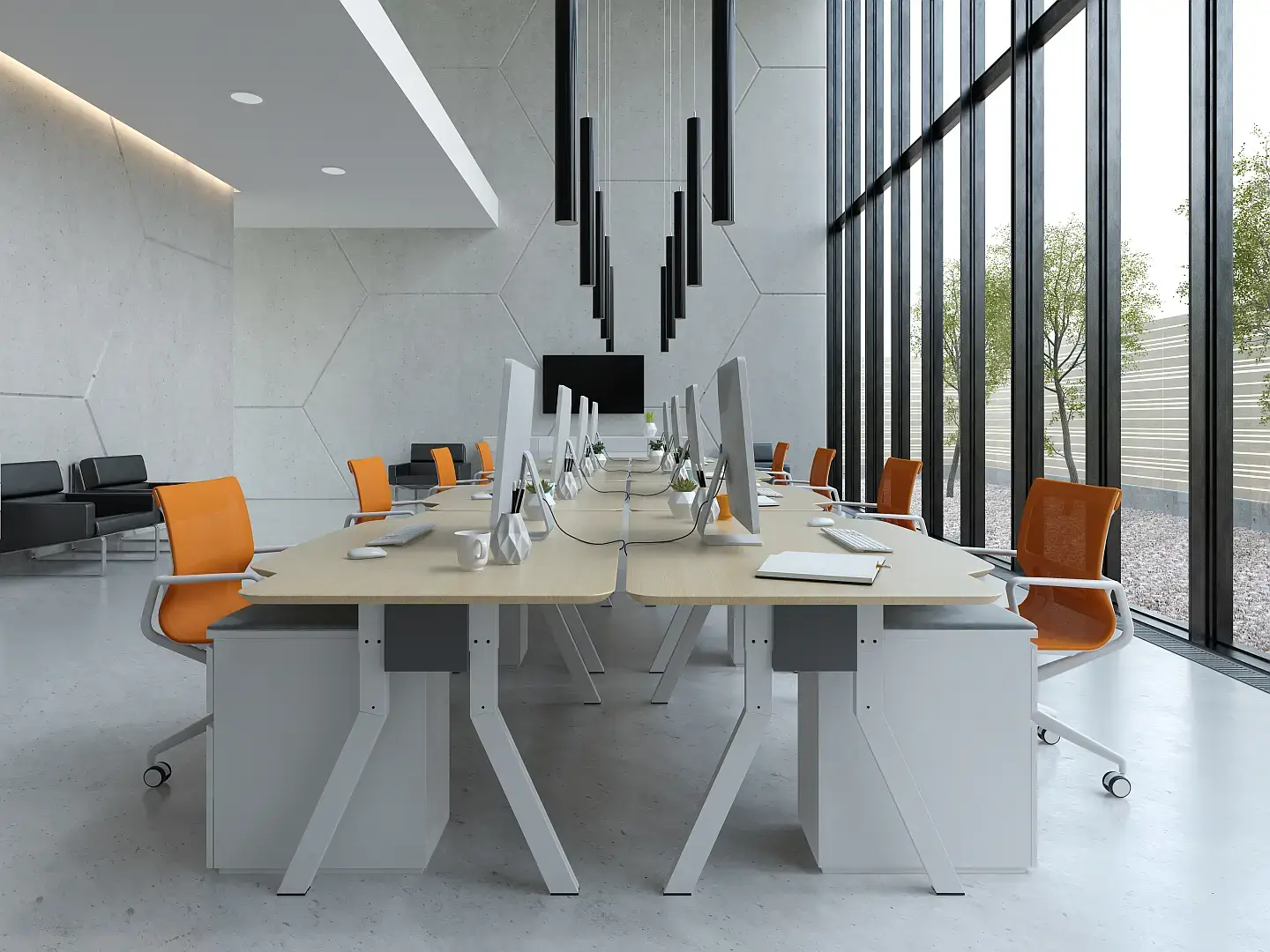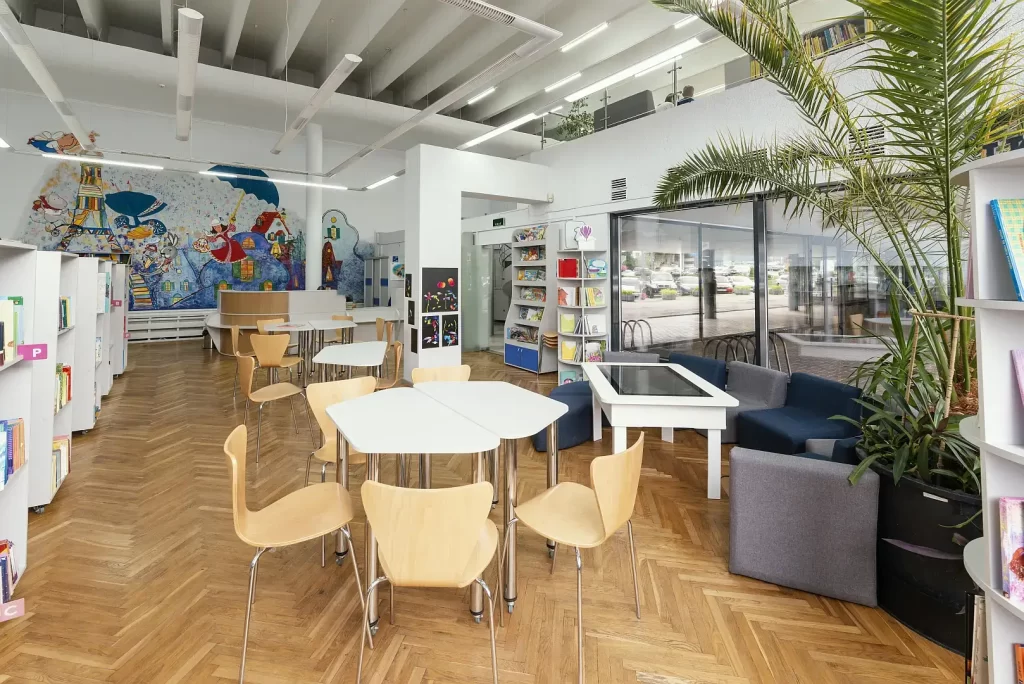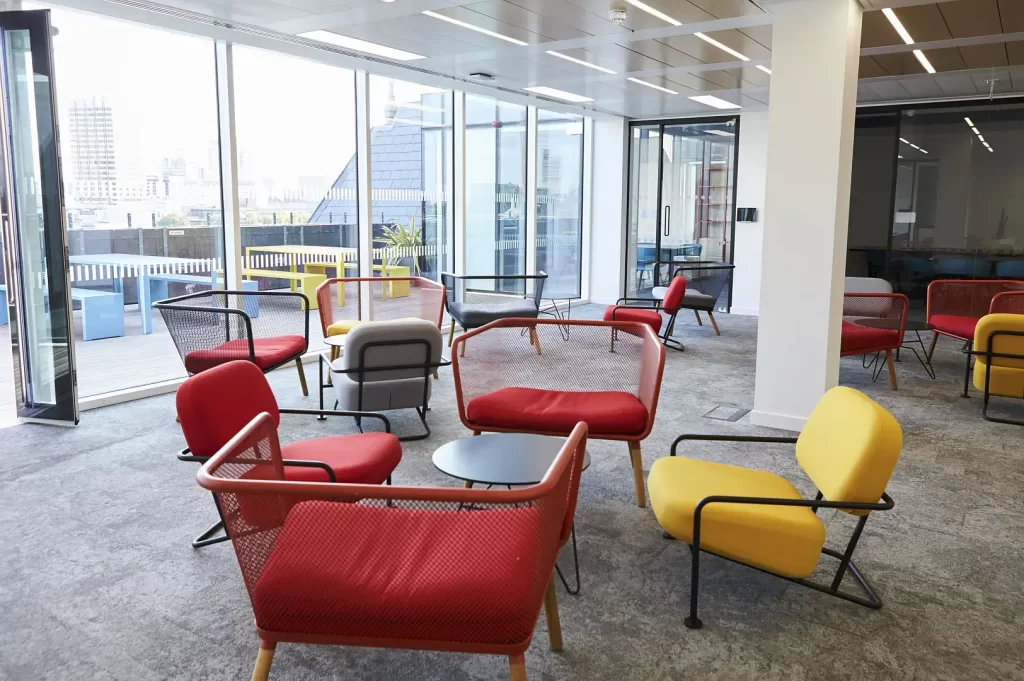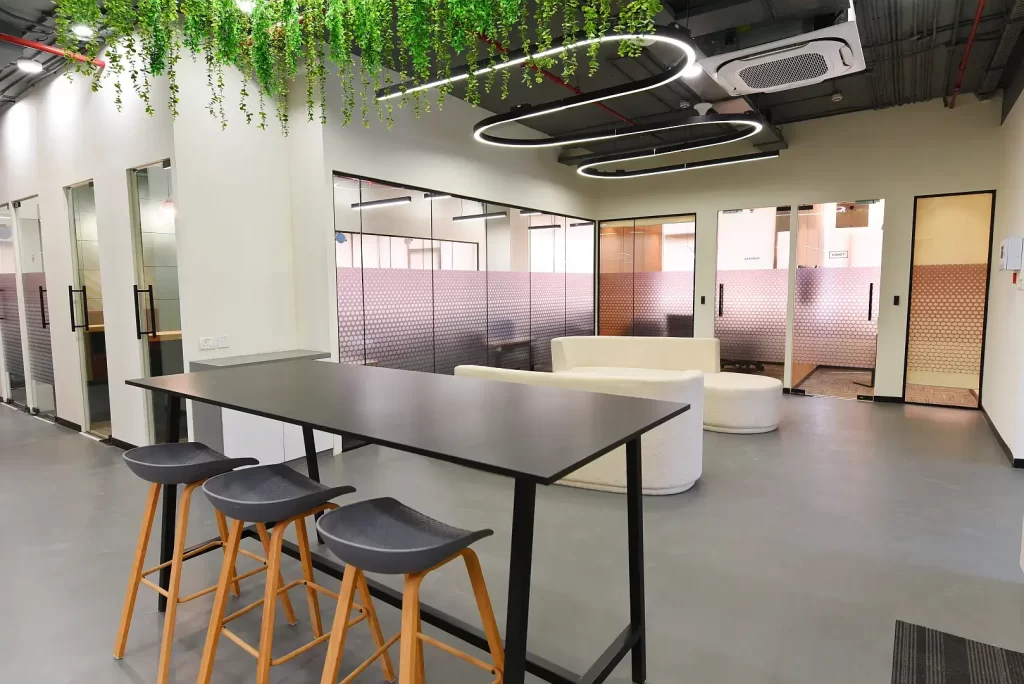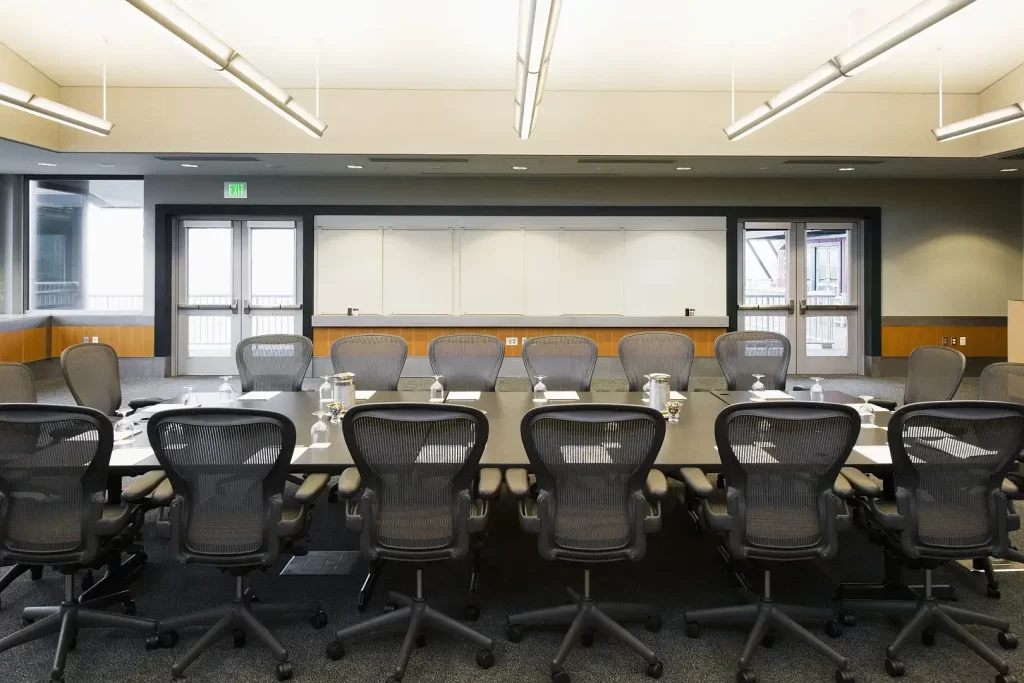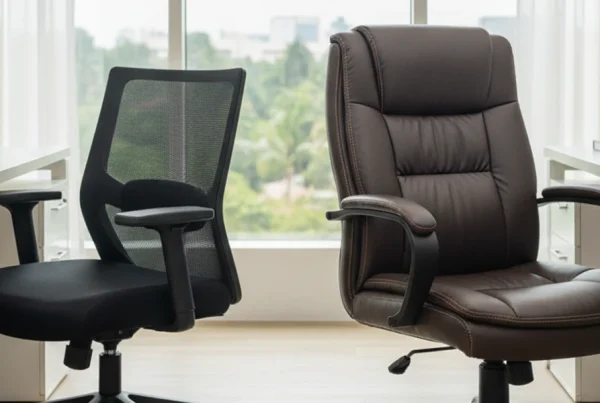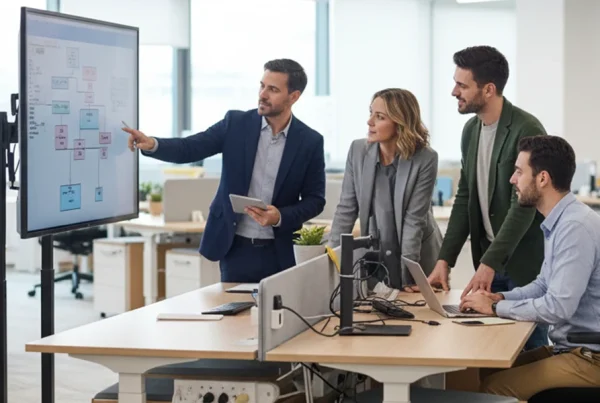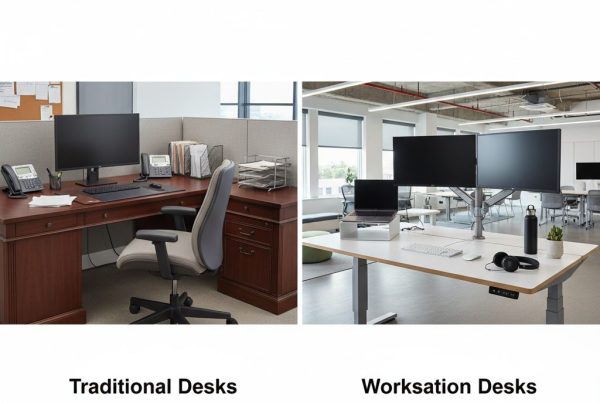What is an Office Design Concept?
A good office space should be like a cocktail, i.e. one part function, two parts inspiration, with just a spritz of comfort and a twist of invention. Brew well and this cocktail makes the otherwise boring 9-to-5 working hours interesting.
Given that employees spend more time at work than at home, an office is not just a physical location. It is the silent engine for creativity, collaboration, and productivity.
A good office concept design doesn’t mean you have to break the bank, pour millions, and buy some Insta-worthy furniture. It means designing a place where ideas ignite, creativity flourishes, and collaboration happens.
A productive office design concept allows employees to concentrate. A great office is, in fact, just another business expense, but it secretly lures the best talent, creates street cred for your brand, and turns Mondays from dreaded to promising. Get it right, and your office space will be that secret ingredient in your business strategy, transforming company culture from merely theoretical to undeniably tangible, one thoughtfully designed square foot at a time.
Key Office Design Concepts for Modern Workspaces
Modern office design concepts offer a flexible workspace. This flexibility is the secret to creativity, wellness, and engagement. As workspaces continue with the changes that technology makes, employers are re-evaluating and redefining their traditional layouts and designs for a modern workforce. Here are some office design concept ideas for the contemporary workplace.
- Open Plan Offices: The open and free layouts encourage communication and collaboration while minimizing physical barriers between employees; hence, positive team dynamics, transparency, and increased morale.
- Flexible Workstations: This element of modern office design concepts enable employees to customize workstations for focus or group collaboration.
- Biophilic Design: Integrating nature within the office elements such as plants, wooden furniture, sunlight spots, etc., creates an enhanced soothing environment to promote well-being, creativity, and a very deep connection with nature.
- Activity-based workplace: It is providing different office designing concepts for team work and mobility for tasks ranging from focus, brainstorming to team meetings.
- Acoustic Management: In addition, soundproofing materials, noise-absorbing panels, and quiet zones all minimize distractions and improve focus for open office working conditions.
- Smart Office: It adds all conveniences and efficiencies to the workplace through building automation, such as automating the functions of climate control, lighting, and security.
- Wellness Design Themes: Exercising ergonomics, developing dedicated exercise spaces, and creating wellness programs all work together to promote the employee’s physical and mental well-being.
- Collaborative Work Hubs: A place for getting busy with writable surfaces, brainstorming tools in groups, and interactive screens to foster collaboration, creativity, and innovation.
Innovative Office Design Concepts for Employee Collaboration
Since employees need to be able to collaborate and work creatively with one another for business, a well office concept design should house spaces and tools to mediate communication, with offices for teamwork, idea issues, and innovation. Here are some office design concepts for collaboration at the workplace:
- Shared Spaces: Breakout areas and coworking zones serve to develop teamwork and brainstorming.
- Spaces with Tech Solutions: Conferencing rooms with digital whiteboards and other digital collaboration tools provide efficiency.
- Effective Areas of Work: Lounge Style settings and informal meetings for idea sharing and creative collaboration.
- Huddle Rooms: A small meeting area comprising a digital whiteboard and soundproofing to facilitate accommodating quick discussion and brainstorming activities.
- Glass Walled Meeting Rooms: A transparent partition that allows privacy but also brings openness and inclusiveness in discussion.
- Standing Collaboration Tables: Hightops allow for spontaneous meetings and vibrant conversations along with best posture.
- Interactive Workstations: Multipurpose desks with builtin technology that allows seamless presentations and idea sharing.
- Social Lounges: Comfortable, informal places where employees can be interacted with and it is proven to bring teams together and innovate.
Incorporating Natural Elements into Office Design
Adding a dash of greenery, natural light, and organic materials can improve air quality, promote serenity, and inspire creativity. An office design with natural elements offers an atmosphere for nurturing good health, relieving stress, and enhancing concentration. Employees within a biophilic office design become happy and motivated to work. Some tips on how to bring nature within and turn an office into a better place are given below:
- Plant Use: The most effective way to achieve better air quality, less stress, and higher levels of creativity.
- Natural Light: Use all the daylight you can to lift mood and wellbeing and less artificial light.
- Natural Elements: Timber, stone, and greenery build a warm and peaceful ambiance that adds a lot of texture and depth to the design.
- Water Features: Indoor fountains as well as aquariums add a touch of peace and atmosphere to any work environment.
- Greened Living Walls: Vertical gardens or moss walls actually help in noise reduction and interior air purification.
- Outdoor Working Space: Patios, balconies, or even rooftops give employees the chance to breathe fresh air rather than stale air coming from an air conditioning system.
- Nature Colors: Soft greens, earthy shades, and shades of sky blue will soften the contours of a business environment almost instantaneously.
- Ventilation and Air Flows: Big glass openings in large places and air cleaning systems were basic tenets of comfort and well-being.
New Office Design Concept Ideas for the Future
The futuristic offices offer a melting pot of flexibility, technology, and sustainability all blended together. Companies are beginning to focus on a new office design concept that makes workspaces adaptable and efficient that capitalize on changing work styles and technological advancements.
Following are certain futuristic office design ideas that are becoming more and more current in shaping modern workplaces:
| Design Concept | Key Features |
| Hybrid Workspaces | Hot-desking, flexible schedules, and dedicated remote collaboration zones to accommodate hybrid teams. |
| Technology Integration | IoT devices, automation, smart lighting, voice-controlled setups, and AI-powered workspace management systems. |
| Sustainability Focus | Eco-friendly materials, energy-efficient lighting, green-certified furniture, and waste-reduction initiatives to create an environmentally responsible workspace. |
| Augmented Reality (AR) & Virtual Reality (VR) Workspaces | Advanced tools for immersive meetings, virtual team collaborations, employee training programs, and digital prototyping. |
| Modular Office Design | Easily adjustable walls, multi-purpose furniture, reconfigurable layouts, and moveable partitions to adapt to evolving business needs. |
| Quiet Pods & Focus Rooms | Private, soundproof booths and designated focus areas for employees who require deep work without distractions. |
| Wellness-Centric Workspaces | Spaces dedicated to relaxation, meditation rooms, standing desks, fitness zones, and access to fresh air to promote overall well-being. |
| Multi-Use Collaboration Zones | Informal lounge-style settings, brainstorming hubs, and interactive whiteboard areas to enhance teamwork and creativity. |
| Smart Desks & Workstations | AI-driven desk booking, ergonomic adjustable desks, and connected workstations that sync with individual user preferences. |
| Eco-Friendly Outdoor Workspaces | Rooftop gardens, patio seating, and nature-inspired breakout areas to encourage work-life balance and fresh-air brainstorming sessions. |
Office Layout Ideas for Boosting Productivity and Focus
In designing an office with a planned layout, the most significant consideration is a productive and efficient working environment. A carefully designed ergonomic office design, therefore, allows employees to have spaces they enjoy working in, collaborating in, or lounging in. By enhancing the layout, you can ensure an appropriate flow of synergy, reduced distractions, and better health among employees.
Here are some important office layout ideas for productivity and their benefits:
| Layout Idea | Benefits |
| Zoning | Dedicated collaborative lounge spaces can contribute to an effective environment. |
| Ergonomic Furniture | Adjustable chairs and desks create comfort, diminish strain, and promote long-term health. |
| Private Workspaces | Quiet rooms or soundproof booths allow focused working, enhance concentration, and reduce distractions. |
| Hot Desking | Flexible seating arrangements allow employees to work from wherever they feel like, making it conducive to workflow and collaboration. |
| Breakout Areas | Informal seating spaces where employees can take a break, informal meetings, or recharge. |
| Standing Desks | Encourages movement and helps reduce the health risks associated with prolonged sitting. |
| Open Collaboration Spaces | Large shared areas with writable walls and comfortable seating for brainstorming and team projects. |
| Soundproofing Elements | Acoustic panels, carpets, and noise-canceling partitions so work operations can be quiet. |
| Green Spaces | Indoor gardens or small green zones improve air quality, reduce stress, and boost creativity. |
| Technology-Integrated Workspaces | Smart desks, wireless charging stations, and digital whiteboards for a higher-than-high efficiency. |
Also read: Office Space Optimization for Boosting Productivity
How to Choose the Right Office Design for Your Company
Choosing office design to stay productive in numbers and in time, requires proper planning and convenient arrangement of occupied spaces. It can ensure a quiet area, a bustling meeting place, or a relaxing spot available to employees’ needs. Some of the major office concept design ideas can include:
- Considerations About Company Culture: Designing your office according to values appreciating such qualities as creativity, innovation, or teamwork offers the best odds of success. Let’s say, for example, that a creative agency may require open collaboration areas, while, in contrast, a more structured and private environment might be favored by a legal firm.
- Space needs: Evaluate how many employees would utilize the office space and the number of departments. Provide meeting rooms, workspaces, and areas where unique styles of working can all have the space they require.
- Future-Proofing: Designing office space which is flexible and adaptable to changing business needs. Adaptations can allow modular furniture and multipurpose spaces for team growth or changing work paradigm.
- Listen to Employees: Seek input from employees in fortifying the design to meet their values while supporting comfort. Addressing noise, seating, and personalization for the workplace can make a difference in employee satisfaction and productivity.
- Brand Identity: Use the look of the office to endorse corporate branding and leave a strong impact on clients and employees. The colors, materials, and artworks should be in tandem with the visions and values cherished by the company.
- Budget: Maximizing value means compromise on aspirations for cheaper solutions. Organic investment should focus on ergonomic furniture, lighting, and prime productivity enhancement features while stretching other items to meet the budget.
- Sustainability Goals: Consider sustainable materials and environmentally friendly practices to promote energy efficient lighting and lower environmental impact.
- Technological Readiness: Does your office setup provide high speed internet, smart devices, and ultra smooth digital collaboration tools for a genuinely modern tech savvy workforce? Creating the workplace with an innovative office design concept will invoke creativity, improve working efficiency, and give room for the health factor of employees.
Also read: Top Ergonomic Chair Benefits for Better Comfort and Health
Frequently Asked Questions
What is an open office design concept?
An open office design concept refers to removing physical barriers between employees to create a more collaborative and transparent work environment. It consists of shared workspaces, communal desks, and flexible seating arrangements that encourage communication and teamwork.
How can an office design boost productivity?
A good office concept design can boost productivity. It organises spaces fitted with ergonomic furniture, appropriates lighting, quiet areas for focused work, and collaborative spaces for teamwork. Further, biophilic design, noise control, and flexible workstations bring any further on an efficient working environment.
What is the best office design for a creative team?
Creative teams work really well in open spaces, versatile spaces that foster the possibility for brainstorming and ideas to be shared. This is an effective combination of areas where one can work together, lounge seating, writable walls, and a few quiet areas for those moments when all-out concentration is required.

Vishnu Sharma
I am the co-founder and CEO of Vlite Furnitech, creating modular office solutions since 2009. With a background in Chemistry and Marketing, and experience as Regional Head at Featherlite, I help design ergonomic, adaptable, and sustainable workspaces. Alongside a team of 120+, we serve corporates like JCB, Just Dial, KFC, and educational institutions. Let’s connect to reimagine innovative, eco-friendly office environments.

